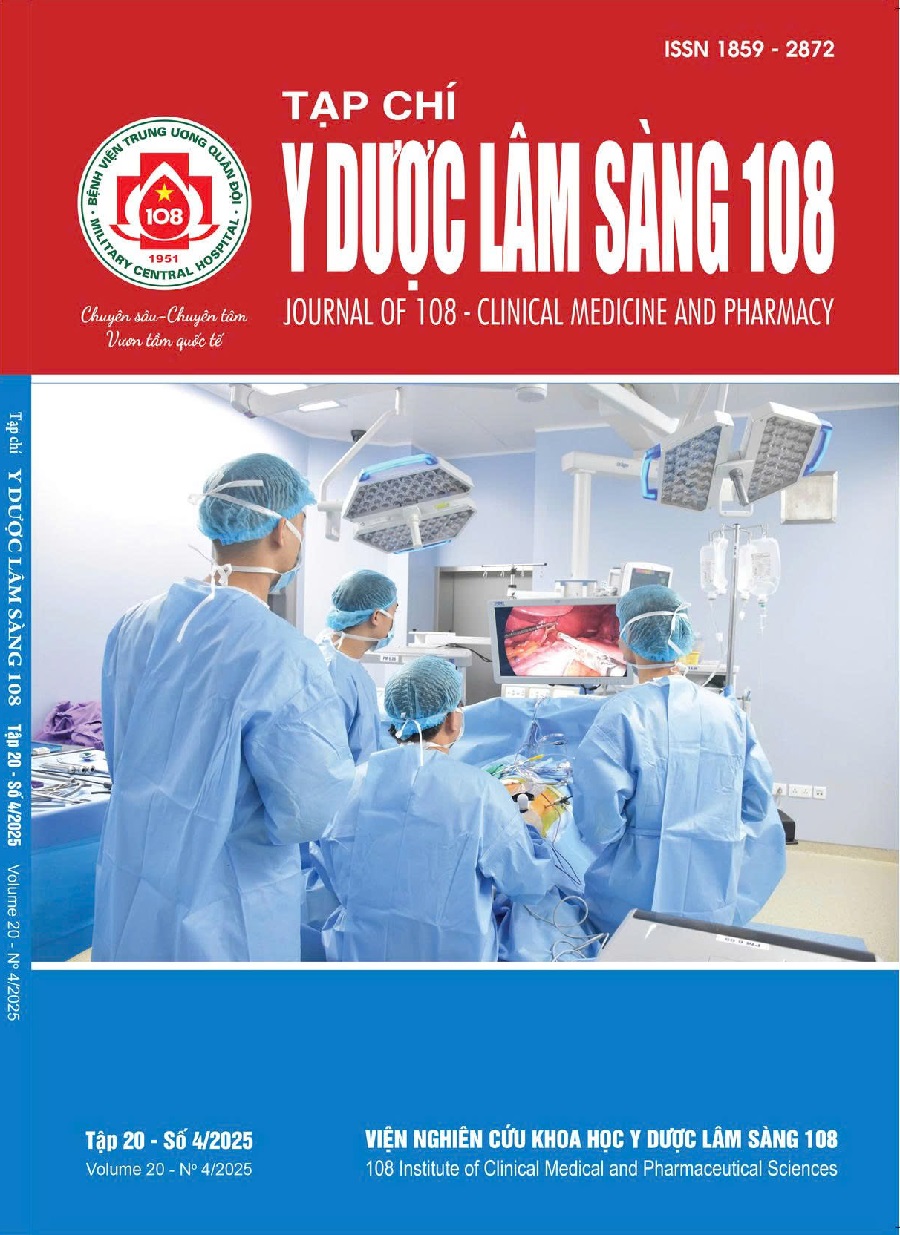Results of uterine fibroid surgery at the Department of Ynecology, A Thai Nguyen Hospital
Main Article Content
Keywords
Abstract
Objective: Describe clinical and paraclinical characteristics, comment on the results of uterine fibroid surgery (UXTC) and some related factors. Subject and method: Retrospective cross-sectional descriptive method of all uterine fibroid patient records diagnosed and operated by laparoscopic or open surgery to remove uterine fibroids and the post-operative pathological results were uterine fibroids without any cancerous pathology at Department of Obstetrics and Gynecology of Thai Nguyen A Hospital from Janury to December 2024. Result: The average age of the study group was 42.02 ± 6.77. Abdominal pain was the most common functional symptom, accounting for 67.5%. Ultrasounds indicate that the patients having one tumor made up the highest rate of 80%. The tumor size of ≥ 5cm accounted for 42.5%. Those with laparoscopic surgery accounted for 39.2%. During surgery, the highest amount of blood loss in the abdominal cavity was from 100 - 300ml, accounting for 92.5%. The average laparoscopic surgery time was 66.98 ± 22.12 minutes, the average open surgery time was 62.6 ± 26.61 minutes. There is a correlation between the number and size of tumors and the surgical approach. Conclude: The average age of the study group was 42.02 ± 6.77. Abdominal pain was the most common functional symptom. Ultrasounds indicate that the patients having one tumor occupy the majority. The tumor size of < 5cm high proportion. Laparoscopic surgery rate is lower than open surgery. The difference in surgical time between the two methods of open and laparoscopic surgery was not statistically significant with p>0.05. There was a statistically significant difference in blood loss, number, and size of tumors with the surgical method with p<0.05.
Article Details
References
2. Maria Syl D De La Cruz 1 EMB (2017) Fibroids: Diagnosis and treatment. Family doctor 95(2): 100-107.
3. Catherino WH PE, Segars J (2011) Proceedings from the national child health and human development seminar on update workshop on uterine fibroids. Sterile fertilizer (95): 9-12.
4. Reich H (2003) Laparoscopic hysterectomy. International for Gynecologic endoscopy. 9(2).
5. Yang Q et al (2022) Comprehensive Review of Uterine Fibroids: Developmental Origin, Pathogenesis, and Treatment. Endocr Rev 43(4), tr. 678-719.
6. Wise LA, Laughlin-Tommaso SK (2016) Epidemiology of uterine fibroids: From menarche to Menopause. Clin Obstet Gynecol 59(1): 2-24.
7. Hoàng Thị Thanh Thủy (2022) Đặc điểm lâm sàng của bệnh nhân u xơ tử cung có chỉ định cắt tử cung hoàn toàn qua nội soi tại Bệnh viện Phụ sản Hà Nội. Y học Việt Nam, 7(118-122).
8. Hà Văn Huy (2022) Đặc điểm lâm sàng, cận lâm sàng bệnh nhân u xơ tử cung kích thước lớn phẫu thuật tại Bệnh viện Quân y 103. Tạp chí Y học Việt Nam, 518(1), tr. 4-7.
9. Wise LA, Laughlin-Tommaso SK (2016) Epidemiology of Uterine Fibroids: From Menarche to Menopause. Clin Obstet Gynecol 59(1), tr. 2-24
10. Yang Q et al (2022) Comprehensive Review of Uterine Fibroids: Developmental Origin, Pathogenesis, and Treatment. Endocr Rev 43(4): 678-719.
 ISSN: 1859 - 2872
ISSN: 1859 - 2872
